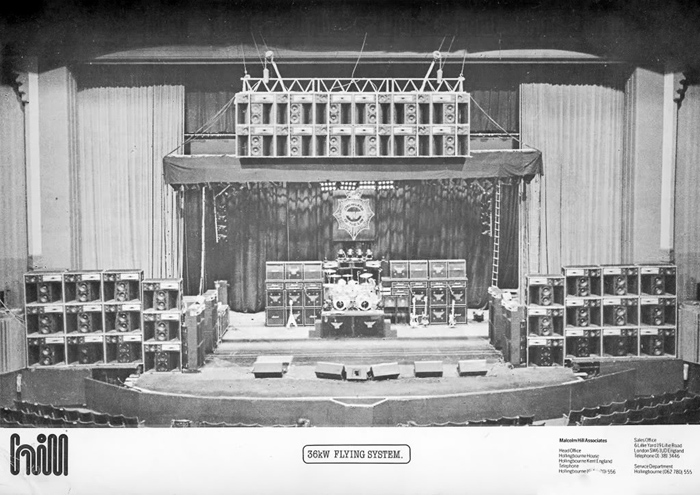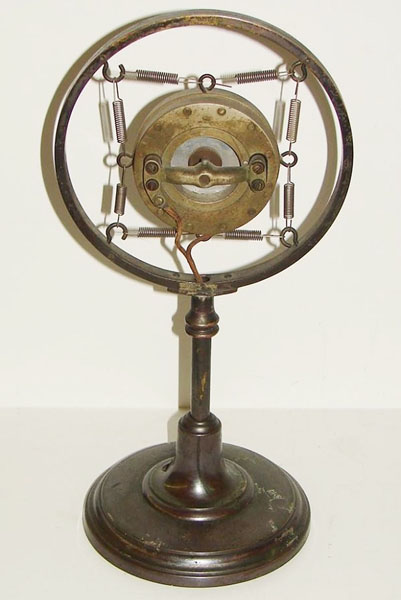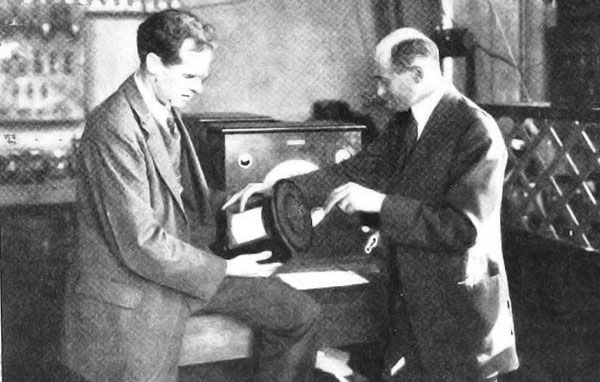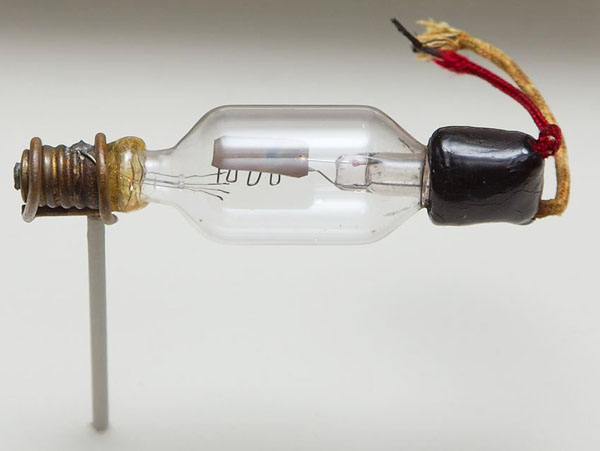What we commonly call “PA” is an amplification system used to reinforce a sound source and distribute it through a venue or building. PA stands for “public address” which hints at its most common usage – voice-based announcements in public spaces, be they train stations, sport stadia, shops, hospitals or airports.
While the principals of public address have existed since Vitruvius first explored architectural acoustics in 20 BC, I’m much more interested in the modern electric PA system and its application in the reinforcement of live music.
For the electric PA to come into being, the component parts first had to be invented and then combined to fulfill a need. The three basic building blocks of all PA systems are:
1) A device to capture sound vibrations and convert them into an electrical signal
2) A way of increasing and controlling the electrical signal
3) A device to convert the electrical signal back into vibrations and propagate them.
Or in simple terms, we need a microphone, an amplifier and a loudspeaker. The first of these to be invented was the microphone, and like many such inventions there is some dispute over who did it first.
Most historians go with David Edward Hughes, who seems to have beaten Alexander Graham Bell, Emile Berliner and Thomas Edison by a few years to demonstrate his rudimentary carbon microphone in 1875. He never sought a patent for his invention, as he wanted it to be a gift to mankind, but he did coin the word “microphone” by thinking of it as the audio equivalent of the microscope.
The carbon microphone was a simple device that used carbon granules packed between two metal plates, the resistance of which changed proportionally in response to vibrations thus generating an electrical signal representative of those vibrations. While carbon microphones have now been superseded by more efficient designs, they were still being used in telephony up until the 1980s. And overall, the design is the prototype for modern mics.
Throughout the 1870s and 80s, various loudspeaker-like devices existed, most notably on Alexander Graham Bells’ telephone (1876) and Edison’s phonograph (1877), but the true moving coil loudspeaker, the forebear of all loudspeakers since, was invented by Oliver Lodge in 1898.
At the time he called it a “bellowing telephone” and there were limited applications for it (as the amplifier had yet to be invented). But it included the same basic design as all loudspeakers since – a diaphragm vibrated by a voice coil (“moving coil”) – the sound of which was then amplified by a flared horn.
In 1925, a research paper by Chester W. Rice and Edward W. Kellogg at General Electric was key in establishing the basic principle of the modern direct-radiator loudspeaker, with a small coil-driven mass-controlled diaphragm in a baffle with a broad mid-frequency range of uniform response. Edward Wente at Bell Labs had independently discovered this same principle and filed a patent that same year. These design principles are still used in direct radiators today.
Piecing It Together
The final piece of the PA puzzle came along in 1906 when Lee DeForest invented the Audion, the first device capable of amplifying an electrical signal.
He did this by taking a two electrode diode, used for detecting electromagnetic waves, and added a third electrode that enabled a small current applied to one of the electrodes to control a larger current across the other two – essentially adding the signal current to current from the power supply to make it larger (and thus louder).
The Audion was refined and became known as the triode, and eventually evolved into the vacuum tube or valve that helped usher in the era of radio, telephony, television and the early days of the electronic computer.
Once these three key inventions became freely available, various people started piecing them together and experimenting with early sound reproduction and amplification systems. Notable amongst these pioneers were Edwin Jensen and Peter Pridham who conducted a series of experiments in their laboratory throughout the 1910s in Napa, CA.
The earliest of these experiments involved connecting a microphone and loudspeaker to a 12-volt battery which resulted in the very first occurrence of acoustic feedback. It’s hard to imagine what they thought of this baffling and unexpected noise but it’s something live sound engineers have been battling against ever since. They continued their experiments by mounting the loudspeaker on the roof of their lab and claimed that a voice could be heard a mile away.
The first documented example of an electric PA system being used to amplify speech and music at a public event was on December 24, 1915 at San Francisco City Hall, when Jensen and Pridhams’ Magnavox system was publically demonstrated (Magnavox being Latin for “great voice”).
The event was a Christmas carol concert with an address by the mayor that was attended by 100,000 people. Despite the rudimentary system only being capable of generating about 10 watts of audio power, the use of large horn loudspeakers helped ensure that the crowd heard the Christmas music and speeches “with absolute distinctness,” according to reports.
In the years that followed various companies got involved in the field of public address and loudspeaker design (i.e., Marconi, Tannoy, Western Electric, Bell Labs, Altec Lansing), and things gradually developed hand in hand with the emerging fields of radio, telephony and cinema. Horn loudspeakers became common sights at large public events on both sides of the Atlantic.
The first sitting U.S. president to use a PA (the Magnavox system) was Woodrow Wilson in 1919, who addressed a crowd of 75,000 people in San Diego as part of his tour to promote the establishment of the League of Nations. In 1925, King George V used a Marconi PA equipped with just six horn loudspeakers to address a crowd of 90,000 people during the British Empire Exhibition at Wembley.
























